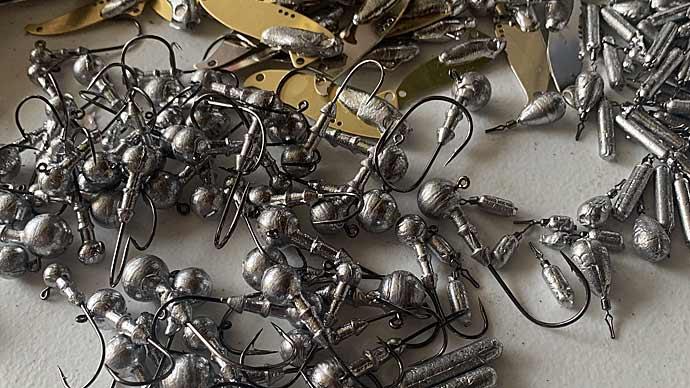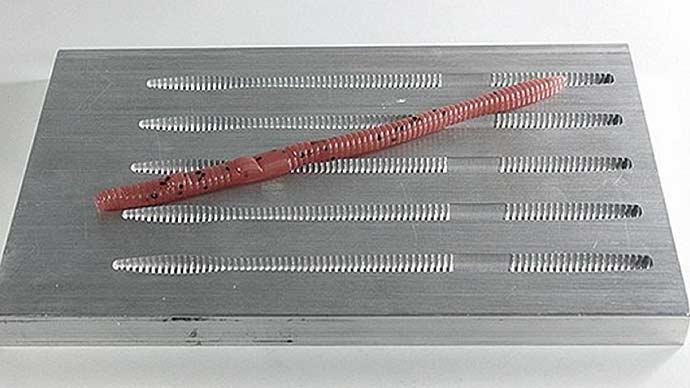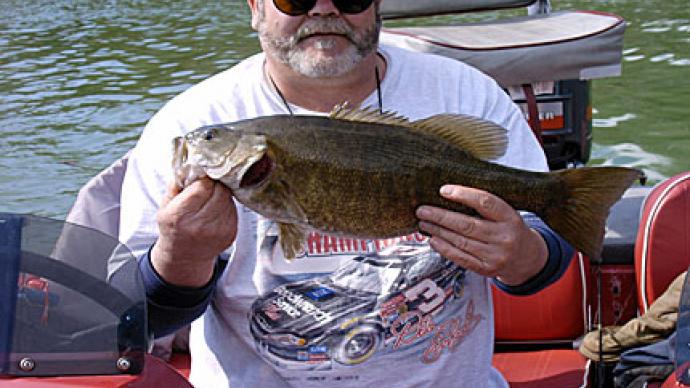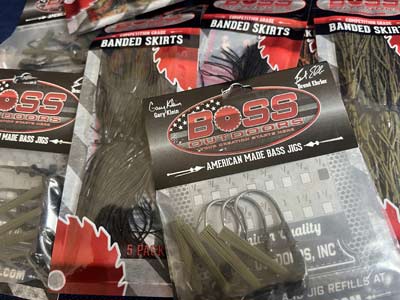
Like everything else in the world, the price of fishing tackle is going up. Top-quality gear costs hard-earned money, and you tend to use a lot of it during the season. One way to save money and get something custom and just to your liking is to make your own tackle.
It can be done on a small scale, or you can go big and make everything you need to stock your tackle boxes. Here are a few ways to get started creating your own tackle.
Starting small
One of the quickest and easiest ways to get into tackle-making is by creating jigs with skirt material. Buying jigheads in bulk saves plenty of money; all you need to add is your favorite skirt material and color. You can easily create a jig for half the price or much less than a packaged jig from one of the major brands.
This is also where you can let your creativity shine and develop custom colors to match crawfish or baitfish colors or to have something unique that nobody else is throwing. You can purchase skirt material already put together with a collar or buy skirt tabs and mix and match colors to get the perfect hue.
You can insert the jig into a fly-tying vice with the skirt tabs and tie it with a heavy-duty thread like upholstery thread. Another quick and easy way is to use the floral wire used by florists to wrap the skirt material several times before twisting the wire and cutting off the excess. This can be done in your hand and even while on the water. For jigs, a 10-pound strength is pliable enough to work with and withstand the abuse of casting and fishing the jigs. Either way, tying with thread or wrapping with wire will keep your skirt material securely in place.
The same approach can be used with hardbaits such as crankbaits and jerkbaits, as some stores sell blanks and painted options. If you are artistic and want to attempt to airbrush the blank baits, the sky is the limit for color options. You can then purchase the split rings and your favorite baits to make your own and save money.
Pouring lead and plastics
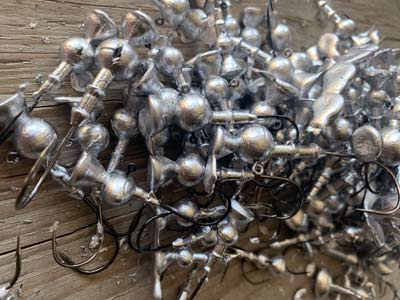
If you want to take it to the next level, there are many different molds for weights, jigheads, and soft plastics. If you use a lot of a specific type of tackle, this is a great way to bulk up your stockpile and save money. It’s perfect for things you often lose over a day of fishing, like drop-shot weights, jigheads, and soft plastic stick baits. It doesn't hurt as bad when you lose on to a rock or tree if you only paid a fraction of the cost, and you can always make more when you start to run low.
Do-It Molds is one of the best sources for the molds and equipment you'll need to pour. They have all the popular styles that bass anglers use. They can also provide all of the equipment needed to get started, and plenty of other lure-making websites offer it all in one place.
Lead can be poured fairly quickly with inexpensive lead ladles or more expensive production pots, making things even easier. One tip is to purchase quality lead, which leads to less waste and easier pouring. For plastic, besides the plastisol itself, you'll need to heat the material and use an injector to fill the mold. These items are readily available and can be bought as a kit, so you have everything you need to start. There are also many tutorial videos on how to do it on YouTube and several channels offering tips and tricks.
Both lead and plastic pouring can be dangerous, as you are dealing with extremely hot material, so use caution when starting your lure-making journey. Another crucial part of pouring is ensuring your area is well-ventilated to protect yourself against harmful fumes. If weather permits, it's a great option to do it in your garage or shop with a fan running and open doors or windows.
Go Custom
One of the most significant benefits of making your fishing tackle is the ability to customize everything. You can do everything from the colors used to the brand and style of hooks you prefer. The possibilities are endless, and this is one time in fishing when being creative can really pay dividends.
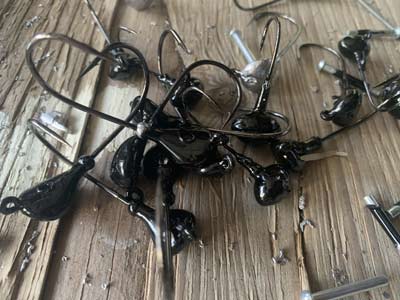
Color options are neverending when it comes to soft plastics. You can mix and match different colorants and glitter combinations until you get something perfect for your needs. You can do the same with your jigs, jigheads, and other lead products with power paints in many colors.
One invaluable tool for painting lead is a fluid bed, which allows for less mess with powder paint and ensures a nice, even coating to your jigheads. After adding color, baking them in a toaster oven sets the paint and provides a hard finish that doesn’t chip or peel easily.
When molding your jigs, each mold has a recommended hook brand and size option that will fit perfectly, but you can also customize this. Using a multi-purpose tool such as a Dremel, you can alter the mold to allow the cavity to fit bigger hooks or those with different bends. It’s permanent, but the availability to use any hook that you want is another benefit to making your tackle and customizing it.
Making fishing tackle is a rewarding experience and one of the best things to do on a day when you can’t make it to the lake. In addition to being fun, it’s a practical way to save money after recouping the initial investment. You can also stockpile the items you use the most. Getting started can be simple and inexpensive, but like everything else in fishing, you can take it as far as you want.


